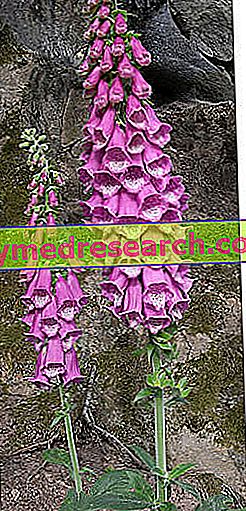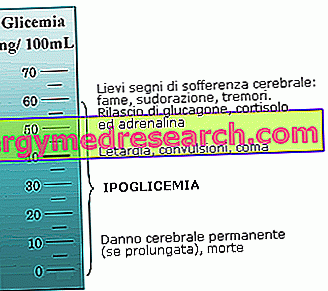Digital toxicity
The Digitalis purpurea (popularly called digital) is the title of the chapter on digital drugs, characterized by a precise class of active molecules: saponins and cardioactive glycosides.
The refined and elegant appearance of the Digitalis purpurea flowers should not be misleading: because of the very particular molecular composition, the use of Digitalis purpurea, in phytotherapy, is prohibited because it is toxic.

From what has been said a clear message emerges: Digitalis purpurea is a highly toxic plant, and its indiscriminate use can create very dangerous side effects.
In the past, the Digitalis purpurea was defined as " opium of the heart ", to highlight its extremely damaging effect - when immoderate - at the cardiac level: in this regard, its use was temporarily banned in every area. After undergoing a moment of "oblivion", the Digitalis purpurea soon returned to being exploited in the medical field.
Genre: Digitalis
The Digitalis purpurea is indeed the main exponent of its genus, but not the only example: the other species - Digitalis lanata - cannot be forgotten, which, in addition to being extremely active, is more toxic. Digitalis nervosa is also worthy of attention, having almost two times more pharmacological potential than the purpurea species. The cardioactive principles are however also present in other lesser known species, such as Digitalis grandiflora, Digitalis ferruginea, Digitalis micrantha : the latter are not used as a medicine because the active ingredients are highly toxic and thermolabile.
But let us now focus on the predominant species. The Digitalis purpurea is subdivided, in turn, into three other subspecies: Digitalis purpurea subsp. Purpurea, Digitalis purpurea subsp. Heywoodii, Digitalis purpurea subsp. Mariana .
Name analysis
The name of the genus ( Digitalis ) derives from "digitas", a Latin word literally translated as "finger" and later adapted into "thimble", a clear allusion to the corolla of the flowers of the plant . The etymology of the most common species ( Digitalis purpurea ) refers to the purple dress worn by the flowers. The lanata species is called such in memory of its particular "woolly" aspect. [taken from Pharmacognosy. Botany, chemistry and pharmacology of medicinal plants, by F. Capasso, R. De Pasquale, G. Grandolini, N. Mascolo]
Botanical description
The Digitalis purpurea, the " precious flower that in the past has treated so many hearts ", is a biennial and rustic plant belonging to the same family as the lion's mouth (Scrophulariaceae). The root of Digitalis purpurea appears large and particularly branched. The leaves are arranged in a spiral, oval oblong, hairy, with a small winged petiole in the first year of life; the following year, the leaves undergo a sort of transformation due to the formation of a new stem. The "new leaves" are scattered, lanceolate, sessile (upper leaves) or petiolate (the lower ones). [taken from Dizionario ragionato of herbal medicine and phytotherapy, by A. Bruni, M. Nicoletti]
The stem of the Digitalis purpurea, hairy, with a height varying from one to two meters, blooms in the second year, giving life to tubular flowers, bell-shaped and pendulous, organized in bunches externally colored in purple and internally in white. The fruit is a small sharp-edged capsule or septicid capsule which contains tiny seeds in its interior.
The Digitalis purpurea grows particularly in wooded, wild or arid areas of one hundred Europe; the plant loves loose soils with a slightly acid pH, preferably enriched with organic material.
Drugs and active ingredients
The very first studies on the use of Digitalis purpurea for medical purposes began around 1820, by Dr. W. Withering: in those years it was observed that the drug gave positive feedback in the treatment of cardiac dysfunction. The drug is represented by the leaves, both fresh and dried, of Digitalis purpurea . The fresh leaves contain primary glycosides, degraded during drying due to enzymatic processes: from this reaction originate other molecules, such as gytoxin, digitoxin, gitaloxigenin and gitaloxin, cardioactive glucosides generally called cardenolides. The phytocomplex extracted from the leaves of Digitalis purpurea is also characterized by saponin glycosides (eg, digitonoside, gitonoside (seeds), tigonoside, etc.), and by digitanol-heterosides (diginoside, digifolein, etc.). Among the active ingredients we cannot miss flavonoids (eg luteolin), caffeic acid, citric acid, ascorbic acid and traces of p-coumaric acid, molecules that complete the Digitalis purpurea phytocomplex . [chemical composition taken from the Phytotherapy and Medicinal Plants Dictionary, by E. Campanini]



